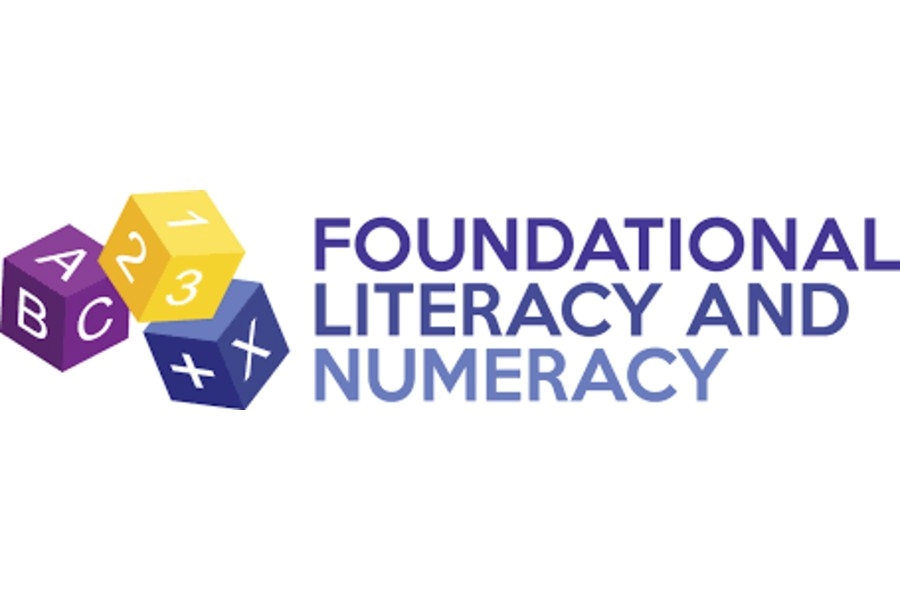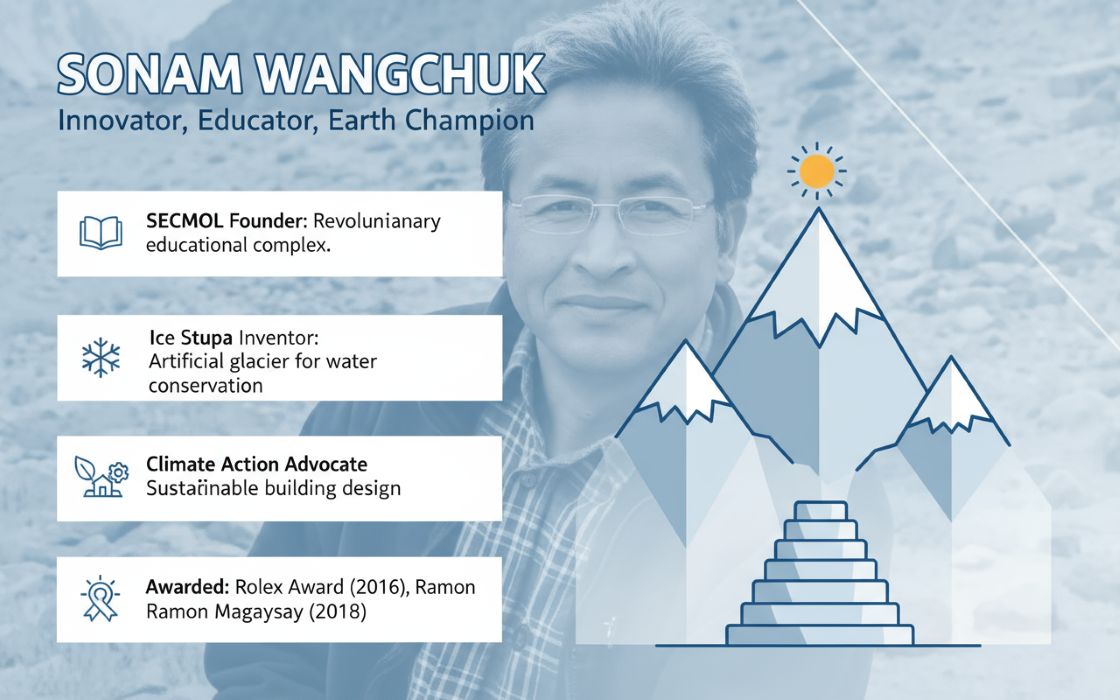As India accelerates its journey toward building a future-ready workforce, the role of education systems in nurturing problem-solving, digital fluency, and 21st-century skills becomes more critical than ever. Over the last two decades, Quest Alliance has emerged as a pioneering force in this transformation, working at the intersection of education, skilling, and technology. Its initiatives have empowered learners, educators, and institutions to reimagine learning beyond textbooks—anchoring it in curiosity, innovation, and agency.
A shining example of this vision is Quest Alliance’s five-year partnership with the Government of Odisha, which has transformed from a pilot program on computational thinking into a state-wide movement. Today, over 8.4 lakh students and 8,800 teachers across 30 districts are engaged in future-ready learning, with coding, AI, and design thinking becoming integral to classrooms. Beyond curriculum integration, Quest has created platforms like Hack to the Future, where young learners design real-world solutions—ranging from AI-powered wildlife alert systems to flood early-warning devices—demonstrating how education can directly respond to community needs.
In this immersive discussion with TheCSRUniverse, Namrata Agarwal, Director – Partnerships, and Md Azim ud Doula, Associate Director – School Program Operations, share Quest Alliance’s journey, key learnings from Odisha, and their vision for scaling systemic change across India.
Q&A
Q. Quest Alliance recently marked a major milestone with the completion of a five-year partnership with the Government of Odisha. What have been the most transformative outcomes of this collaboration, and how do they reflect your vision for future-ready learning?
A. Over the last five years, our partnership with the Government of Odisha has evolved from a pilot initiative into a blueprint for systems transformation. What began in 2020 as a program to introduce computational thinking to a few districts has today become a statewide movement, reaching over 8.4 lakh students across 8863 government schools, supported by 8,800+ trained teachers across 30 districts, with a full-fledged computational thinking curriculum institutionalized across grades 9 to 10.
Further, we have developed a curriculum for classes 6 to 8 in partnership with civil society organisations like LLF (Learning Link Foundation) and RPF (Raspberry Pi Foundation), which is currently being piloted in 462 PM Shri schools across Odisha in the current academic year.
A transformative outcome has been the shift from project-based implementation to embedded, state-led ownership of future-ready learning.
This change stems from our belief that preparing young people for the future, especially those from underserved regions, requires more than access to content or infrastructure. It requires embedding 21st-century skills like problem-solving, critical thinking, digital fluency, and collaboration into the education system.
We saw learners learning how to code, and also applying their learning to real-world challenges. At our Hack to the Future events, students developed AI-powered wildlife alert systems, smart mid-day meal attendance trackers, and flood early-warning devices. These were not hypothetical exercises but solutions to real problems faced by their community, rooted in lived experience, built using design thinking, sensors, machine learning models, and data analytics. For many of these students, it was their first exposure to technology beyond the textbook.
The shift in mindset among educators and administrators has been a defining feature. Teachers now lead coding and AI sessions with confidence. Several have become mentors and facilitators in their own right, designing and showcasing student innovations, participating in webinars, and supporting peer learning. The government, too, moved from supporting a program to co-developing a state-wide curriculum, in partnership with organizations like Quest Alliance, Learning Links Foundation, and Raspberry Pi Foundation.
Another critical layer of transformation was in its efforts to bring in equity and inclusion in our programmes. Young girls in some of the most remote regions of Odisha had the opportunity to engage with AI, coding, and design thinking.
This five-year journey in Odisha affirms our vision for future-ready learning, one that goes beyond skill development to nurture agency, confidence, and systems-thinking in both learners and educators.
Q. Initiatives like the 'Hack to the Future' hackathon and projects by students such as Bhakta and Shika show remarkable creativity and local relevance. How does Quest ensure that such student-led innovations move beyond prototypes and continue to be nurtured?
A. Events like Hack to the Future are designed as platforms for nurturing young people as long-term problem-solvers. The students who build real-world solutions, like Bhakta’s wildlife alert system or Shika’s hospital navigation app are engaged in a much deeper process of exploration, empathy, and community-led design. Before they even arrive at the hackathon, students undergo a pre-event process that includes community mapping, field research, and issue identification. They are encouraged to draw directly from the challenges they or their communities face. This grounding in lived experience ensures that the solutions are meaningful, and relatable to the young learners and their context.
Each team is paired with a mentor, usually a Quest facilitator or teacher who doesn't just support them during the event, but continues to guide them beyond. Mentorship here means more than technical advice; it’s about building confidence, asking the right questions, and helping students iterate thoughtfully on their ideas. Many of these mentors also serve as bridges to future learning opportunities, including state-level exhibitions, innovation fairs, and internships.
The Hack to the Future experience feeds into a larger system. Promising projects are showcased through state-level platforms like Career Days or STEM Fairs. They are included in inter-school and inter-state hackathons and innovation events. Many are featured in state and national-level innovation fairs, and submitted for awards like the INSPIRE MANAK Award. Some students are invited by institutions like IIT, and Ravenshaw University to present and further refine their work, an opportunity that can be truly transformative for a government school student. In some cases, students get to develop advanced versions of their prototypes and share them with larger audiences through events facilitated by government and academic networks.
These pathways not only recognize innovation but also expose students to new academic and career possibilities.
Students are encouraged to continue developing their projects as part of classwork, Kaushali Club activities, or coursework under the state’s new computational thinking modules. Teachers play a big role here. Many have begun integrating inquiry-based learning, reflection journals, and prototype reviews into everyday instruction.
When students like Shika and Bhakta present to district officials, speak at inter-state events, or win peer-voted awards, it reinforces that their ideas have value. They begin to see themselves not just as learners, but as designers of the future.
While awards and showcases are valuable, the deeper takeaway for students is the development of problem-solving and critical thinking skills. Through hackathons, they learn to identify the root cause of complex community issues, collaborate with peers, engage in research, and move from abstract ideas to tangible solutions.
Q. The Odisha partnership has embedded computational thinking, AI, and STEM in classrooms across districts. From a systems-change perspective, what shifts did you observe among educators and administrators over these five years?
A. The most significant systems change we witnessed in Odisha was relational and behavioural. Over five years, educators and administrators evolved from being participants in a pilot to becoming champions of innovation within the public education system.
Many teachers had never engaged with coding or computational thinking themselves. Administrators, too, were cautious about introducing a new subject in a system already grappling with infrastructure and resource challenges. But along the way teachers moved from passive recipients to active facilitators. We trained over 8,800 government teachers not just in how to use digital tools, but in how to apply design thinking, guide inquiry-based learning, and integrate emerging technologies like AI into their classrooms.
Many of these teachers went on to mentor student hackathon teams, lead Kaushali Clubs in their schools, showcase innovations at district and state-level events and engage in peer learning communities via WhatsApp groups, webinars, and local clusters.
As many as 29 educators were recognized through the 21st Century Educator Awards, during the hack to the Future event in Bhubaneshwar (May 2024) which helped build pride and reinforce their role as change makers.
In 2023, the Department of School and Mass Education invited Quest Alliance, Learning Links Foundation, and Raspberry Pi Foundation to co-create a computational thinking curriculum. This led to the rollout of the Kaushali and DEEP curriculum for classes 6 to 10, approved by the Board of Secondary Education and now a compulsory part of classroom instruction.
The process of co-design created deep alignment and trust. Government officials became co-owners of the vision, and began advocating for future-ready learning as a core education goal. We embedded feedback loops into every level of implementation: teacher training, classroom practice, and school-level engagement. Block-level review meetings, support groups, digital webinars, and government-led M&E via Mo School Abhiyan helped institutionalize continuous learning. Teachers and administrators alike began using data, not just to report compliance, but to reflect on student engagement and growth.
Administrators initiated awards like the Mukhya Mantri Shiksha Puraskar, drawing inspiration from recognition efforts we had piloted.
Odisha demonstrated that when teachers are empowered and governments are trusted as co-creators, education systems can be grounds of innovation.
Q. Taking a step back, how have the learnings from Odisha informed your broader school-to-work strategy across India? Are you looking to replicate similar models in other states or regions?
A. Odisha has been a pivotal learning ground for us not just in terms of reach, but in how systems thinking, youth agency, and institutional partnerships can work together to create real, lasting change. The experience has reshaped how we define and deliver our school-to-work strategy across the country.
From Odisha, we have learned that preparing young people for the world of work is about building foundational mindsets: curiosity, resilience, problem-solving, and digital fluency. It’s about ensuring young people, especially girls and those from marginalized communities see themselves as capable of shaping their futures.
In Odisha, students started by learning to code but quickly moved into problem-solving in real-world contexts. This journey from digital skills to community innovation to career awareness has become the arc we now design for in all our programs. Whether it’s in Jharkhand, Andhra Pradesh, Gujarat, or Karnataka, we aim to connect the dots between self-learning, skill building, and career readiness in a seamless way.
Girls from tribal districts built AI-based wildlife alert systems; students from rural areas presented solutions at state showcases. This has deepened our commitment to equity in access and participation. Across other geographies, we now actively work to ensure representation across gender, geography, and social identity.
Beyond jobs, what many young people across the country are seeking is a sense of purpose and self-worth. In Odisha, students told us how hackathons helped them find their voice, become confident speakers, and see themselves as leaders. This has shaped how we design our career exploration journeys, rooted in both aspiration-building and skill mastery.
We are currently in active conversation with several state governments, educational institutions, and civil society networks to adapt and replicate elements of the Odisha model in diverse contexts. The focus is on translating the principles of the Odisha model (systems change, student agency, and educator leadership) into local realities.
Q. Quest Alliance had received a trust-based grant from philanthropist MacKenzie Scott in 2023. Could you tell us a little more about that and how has that funding helped shape the organization’s evolution?
A. Receiving a trust-based grant from MacKenzie Scott in 2023 was a significant milestone for us at Quest Alliance. The unrestricted nature of the grant came at a pivotal time, giving us the flexibility to make bold and strategic investments in areas that are foundational to our long-term impact, like the deep impact in Odisha
It has allowed us to focus on strengthening our internal teams, build leadership, strengthen our monitoring & evaluation frames and develop technology solutions - all for the mission of creating impact for young people we work with. We’ve been able to take risks, explore creative solutions, and build deeper systemic change into our school-to-work programs.
The grant reflects a powerful signal that trust based funding is possible, and that it creates impact. It recognizes and respects the on-ground expertise of organizations. It has not only provided stability but also empowered us to stay focused on our core mission: equipping young people with the skills and mindsets they need to thrive in the 21st-century workforce.
Q. Quest has long championed the idea of ‘future-ready learners.’ In today’s context of rapid technological and societal shifts, how do you define the competencies that young people need to thrive—and how are you embedding these into your programs?
A. At Quest Alliance, we define a future-ready learner not just by what they know but by how they think, how they adapt, and how they act. In today’s ever changing world, being future-ready means being able to learn continuously, think critically, collaborate and act with empathy and agency. We think of future-readiness where young people see themselves as lifelong learners.
We encourage the development of skills like computational thinking and coding, AI and data literacy, digital storytelling and communication. We embed critical thinking through design challenges and debates, empathy through community-mapping exercises and collaboration through group tasks and peer mentorship.
Through initiatives like Kaushali Clubs, Hack to the Future, and our Career Quest* game, learners build these skills by solving real problems often drawn from their own communities.
(*Career Quest- https://careerquestgame.questalliance.net- is a carefully researched, thoughtfully designed, and deeply contextualized career game that is designed by Quest Alliance. This online game empowers young people to explore multiple career pathways with an experiential approach, shifting from passive information consumption to active decision-making. Its impact and innovation have also been recognized globally, with Career Quest selected as one of the top 100 EdTech innovations at the HundrED Summit 2024 and showcased at UNESCO’s Games for Change Festival 2024.)
We embed these competencies across age groups and contexts, from secondary schools to Industrial Training Institutes (ITIs), from urban learning labs to rural classrooms. And we constantly evolve the design of our programs through research, learner feedback, and partnerships with educators and technologists.
Future-readiness is a way of learning, thinking, and acting that evolves with the world and we are committed to ensuring every young person has the tools to meet it with confidence.
Q. There’s been growing concern that India’s skilling ecosystem is not fully aligned with the aspirations of young people or the demands of a changing job market. What do you see as the most pressing gaps, and how can they be bridged more effectively?
A. The skilling ecosystem today sees a disconnect between curriculum and real-world relevance, between learner aspirations and available pathways, between short-term training and long-term employability. Much of the current skilling infrastructure is focused on specific job roles or static curriculum modules, rather than building the foundational, transferable skills needed to navigate a dynamic world of work. In a landscape shaped by automation, platform-based work, and AI, learners need more than just domain knowledge, they need problem-solving, adaptability, digital fluency, and communication skills.
We are addressing this by embedding these competencies across all our programs from Class 6 through ITIs using real-world projects, digital tools, and self-learning pedagogy.
Our approach is to begin with career awareness and identity building. Tools like Career Quest and events like Career Days expose learners to diverse pathways from entrepreneurship and tech to green jobs and social impact. We help them map their interests, understand the labor market, and set realistic goals.
We work to build learning ecosystems, bringing together educators, parents, alumni, mentors, and employers. At Quest Alliance, we are working toward a future where every young person regardless of geography or gender has the skills, confidence, and support to thrive in a changing world.
Q. Your work stands out for its emphasis on collaboration with governments, educators, funders, and NGOs. In your view, what makes a partnership truly impactful and sustainable in the education and skilling space?
A. A sustainable partnership in education and skilling is built on shared vision, distributed ownership, and mutual accountability. Sustainable partnerships are rooted in designing together. In Odisha, for instance, the state didn’t just adopt a computational thinking curriculum it was co-created it alongside the Department of School and Mass Education, the Board of Secondary Education, and other civil society partners. When partners co-own the solution, they are far more likely to sustain it long after a project ends. We prioritize joint reviews, open feedback loops, and learning spaces where teachers, officials, youth, and NGOs can share what is working and what is not. This culture of reflection ensures that decisions are grounded in field realities, not assumptions.
Q. For CSR leaders and NGOs working in this domain, what are your top suggestions for moving beyond conventional metrics and ensuring deeper, systemic impact?
A. In the education and skilling space, it’s easy to fall into the trap of measuring numbers trained, sessions delivered, devices distributed. But these conventional metrics often miss the deeper shifts that signal real transformation: mindset change, confidence, critical thinking, and systems readiness.
At Quest Alliance, we have spent the past two decades rethinking how impact is defined and measured. After participating in Hack to the Future, nearly 47% of students submitted Scratch-based innovations, and 59% reported being able to identify and question gender stereotypes. These are indicators of agency and mindset shifts.
In Odisha, systemic impact was evident when the state co-developed a curriculum, trained over 8,800 teachers, and initiated its own platforms for educator recognition and innovation. These signs of institutional ownership go far beyond typical program outputs.
We also recommend tracking longitudinal indicators like growth in confidence, clarity of career goals, and use of digital tools over time. These tell us whether the intervention is helping young people move toward a better future.
For CSR leaders, this would entail engaging deeply with how systems shifts. These shifts cannot be reported in quarters, 1 year or in quantitative numbers alone. After a decade of the CSR law, if we need to look at lasting change, CSR’s will need to make patient, long term commitments and balance measurement metrics with hard KPI’s and what’s relational, felt and observed on the ground.
Systems change involves shift in policy, practice, attitudes and behaviours by people who constitute the system, and the right metrics need to be geared towards measuring these shifts meaningfully and not looking at policy change as the end in itself.
Q. Looking ahead, what are Quest Alliance’s key priorities for the next three to five years? Are there new technologies, regions, or focus areas you're particularly excited about exploring next?
A. Quest Alliance’s roadmap for the next three to five years is guided by a strategic vision that places young people at the center of India’s social and economic transformation. Anchored in the three pathways of innovating, mainstreaming, and enabling, our priorities focus on preparing learners for the future of work through contextually relevant, tech-enabled learning ecosystems.
Innovating: We aim to identify emerging needs and translate them into innovative, tech-enabled learning experiences that resonate with young people. These innovations are designed to support learners on their journey of career exploration, transition, and success.
We are especially excited to leverage AI to build personalized career exploration, guidance, and support systems that can adapt to each learner’s context, interests, and aspirations and explore ways to make future-readiness accessible, engaging, and deeply relevant to every learner.
Mainstreaming: Quest Alliance will continue to deepen collaboration with state governments and national platforms to embed future-ready frameworks into public systems. Building on our experience with Odisha’s state-wide computational thinking rollout and national-level ITI curriculum co-creation, we aim to expand state partnerships; integrate career transition frameworks into school and TVET curricula; strengthen educator training, policy influence, and curricular adoption.
Enabling: Our third focus is to enable the ecosystem through knowledge, partnerships, and capacity-building, so that others can adapt and scale them. We will share insights with other CSOs and ecosystem actors, in order to build capacity to support career transitions. We will continue building an ecosystem of like minded CSOs, educators, funders and governments to collaborate, learn, and scale what works.
With this approach we aim to reach over 1 million learners, impact 25,000 educators, and work with 4,000+ schools and institutions over the next five years.

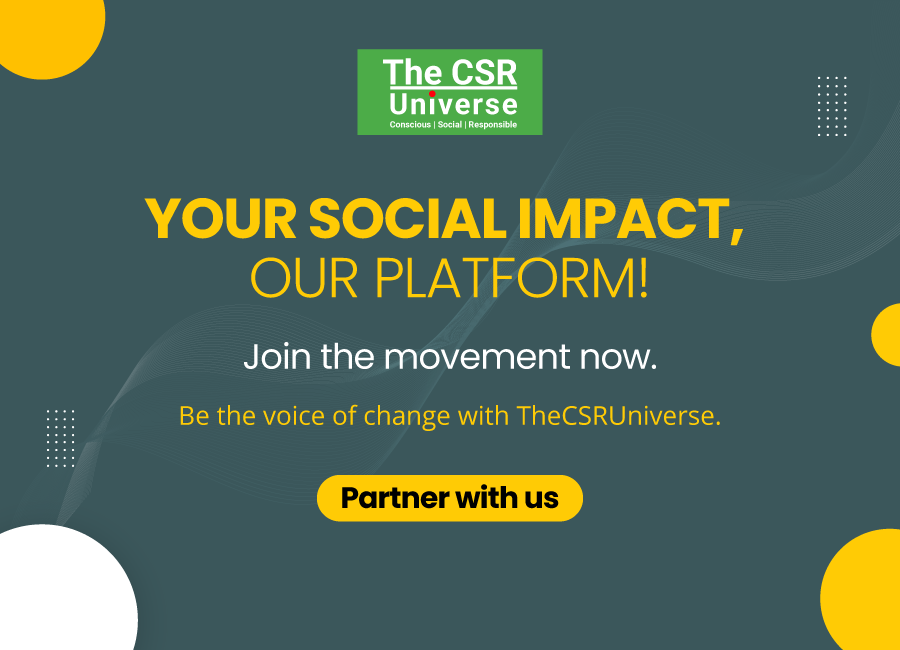

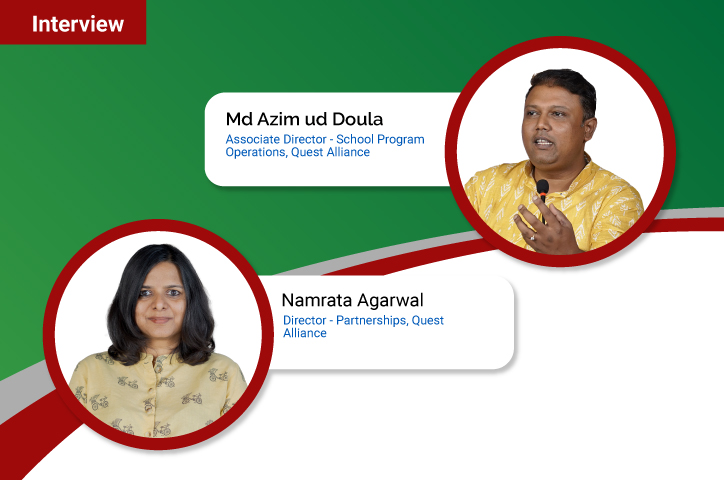
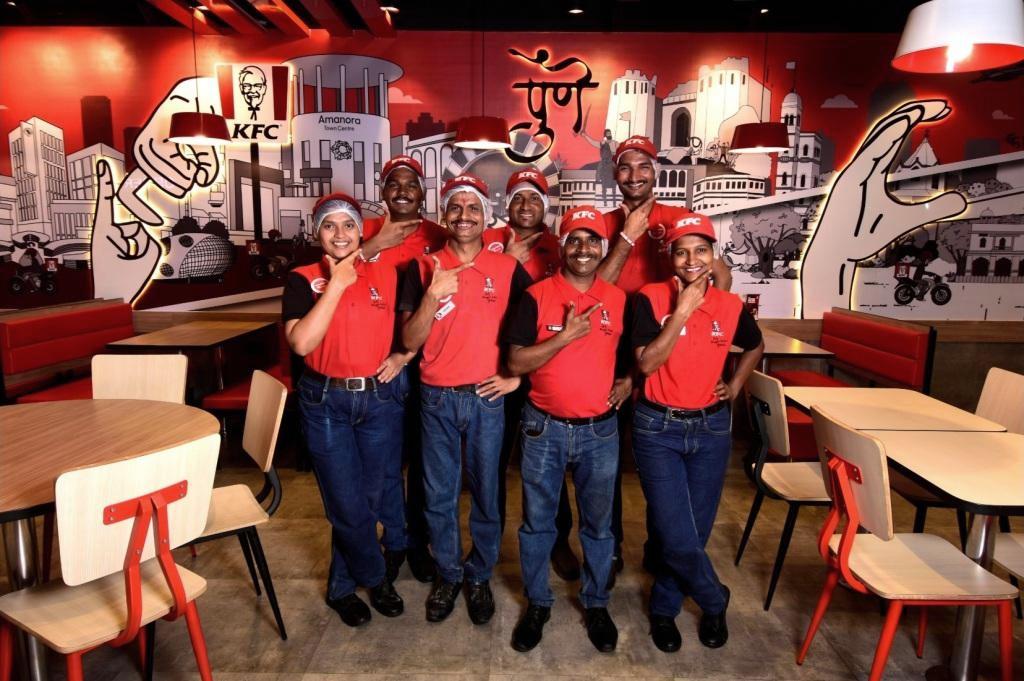

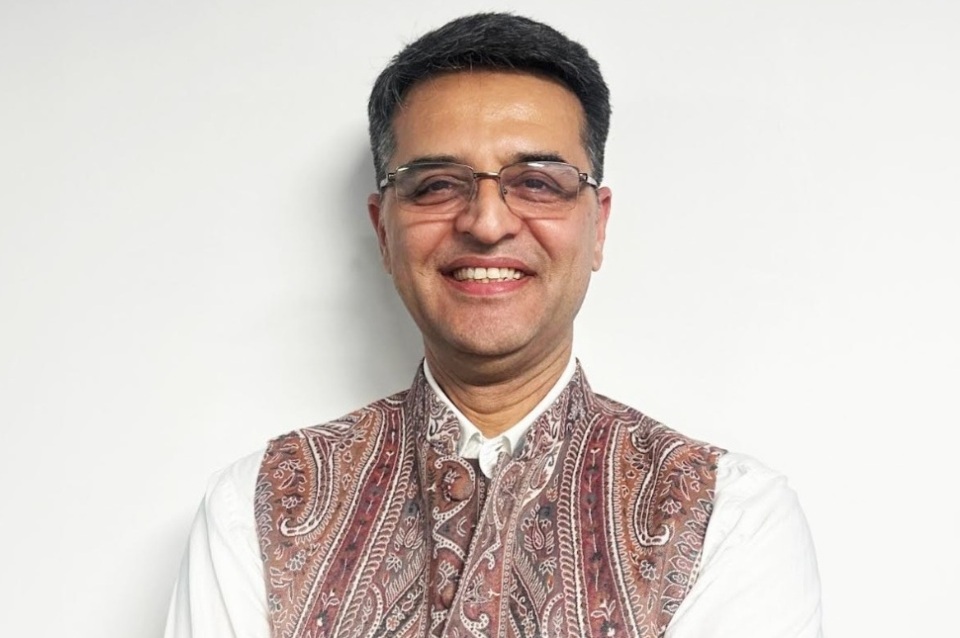
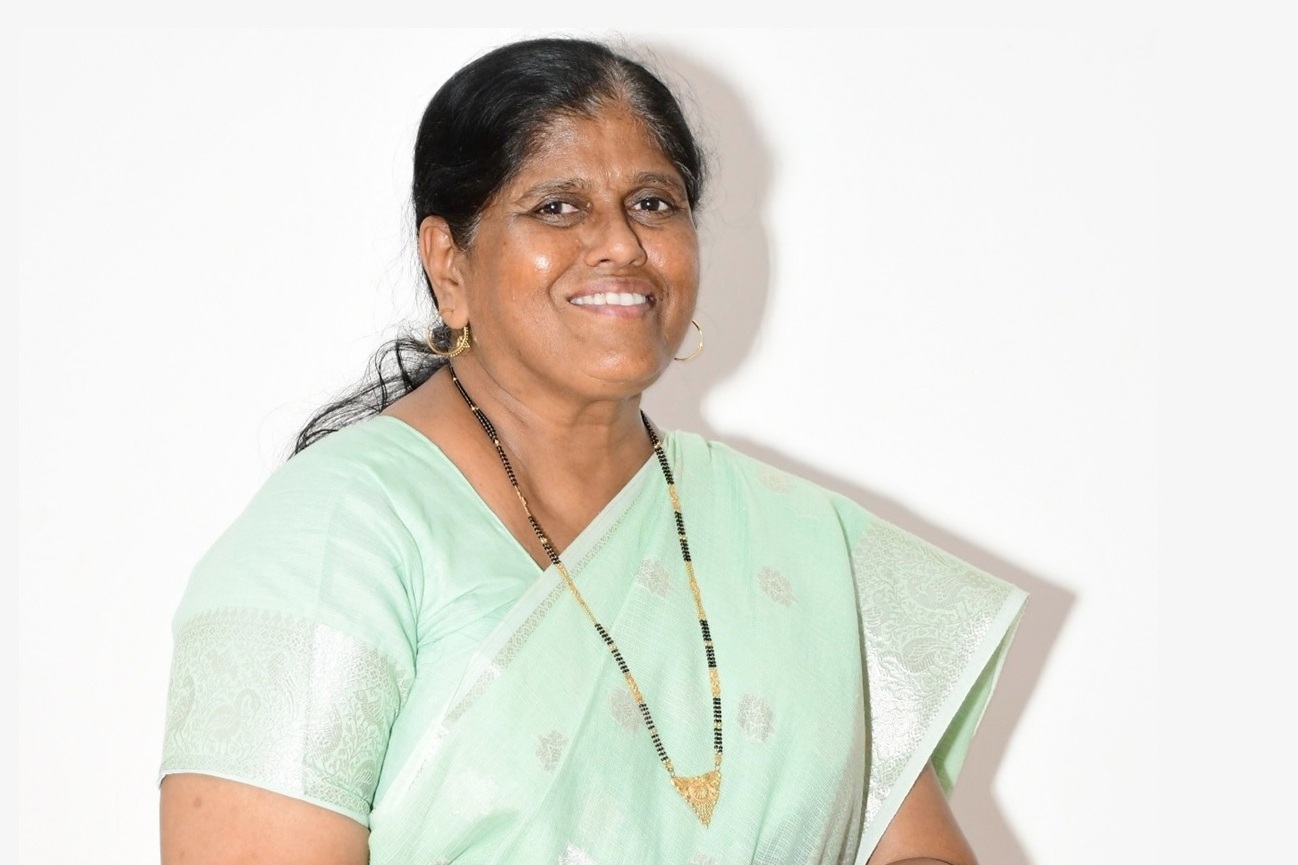
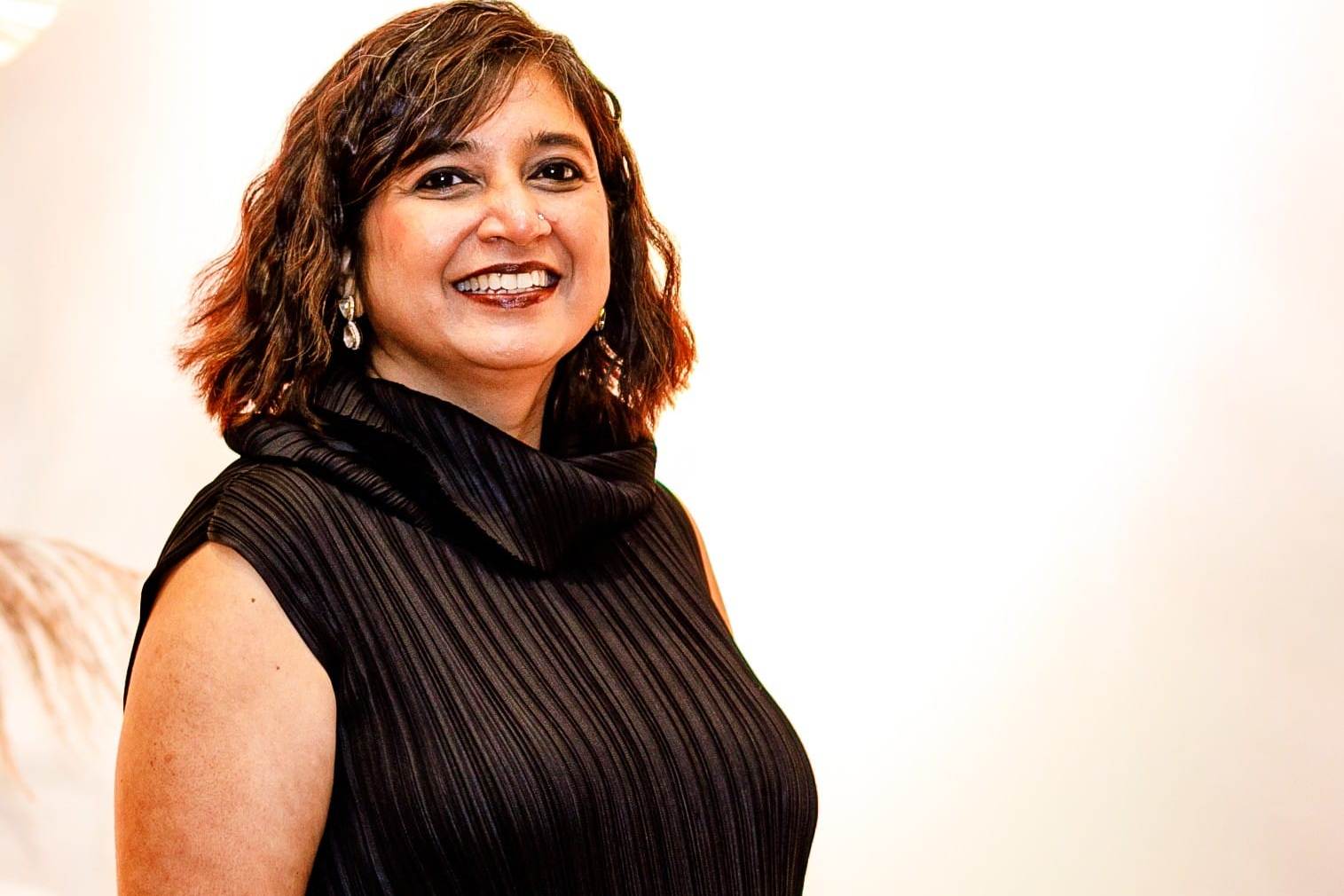


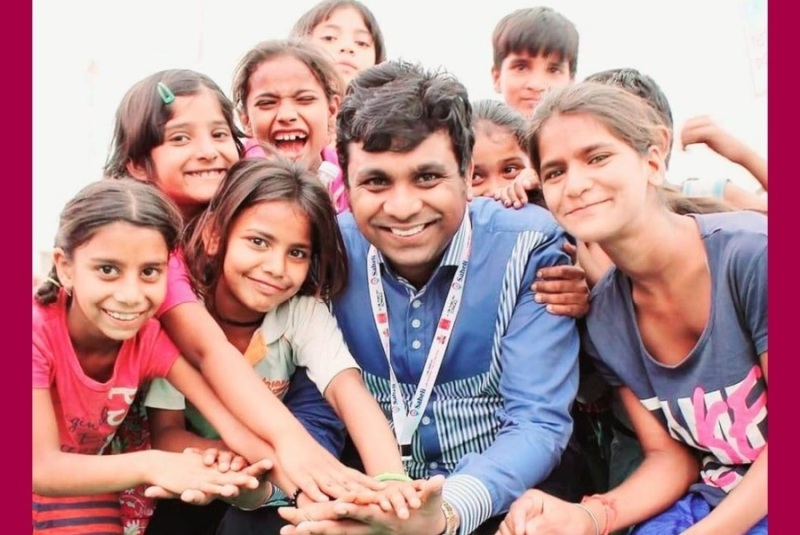
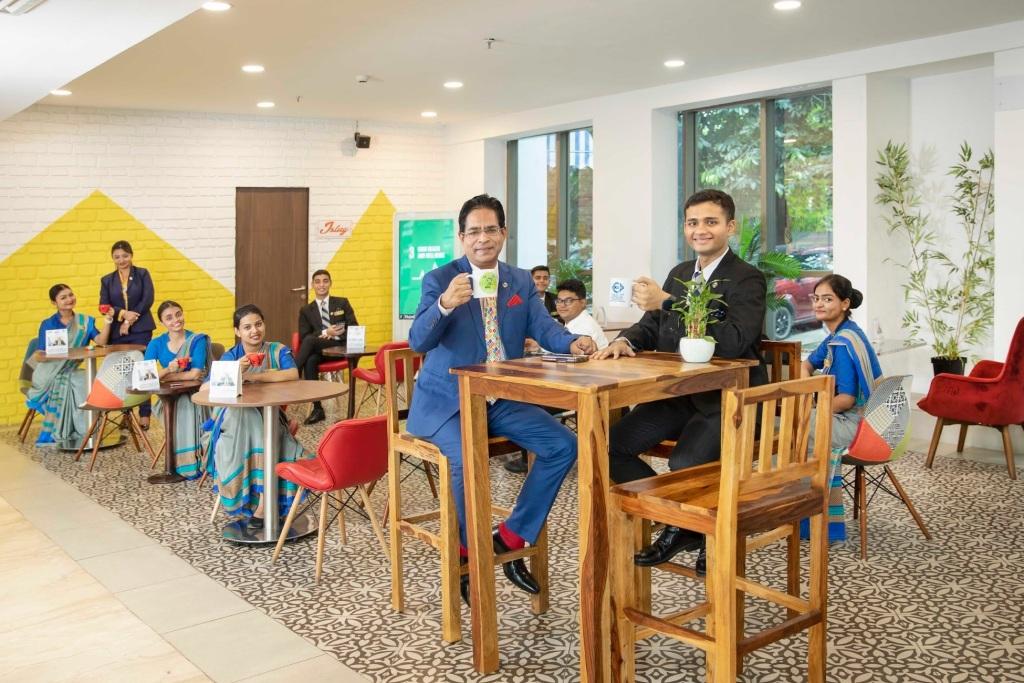
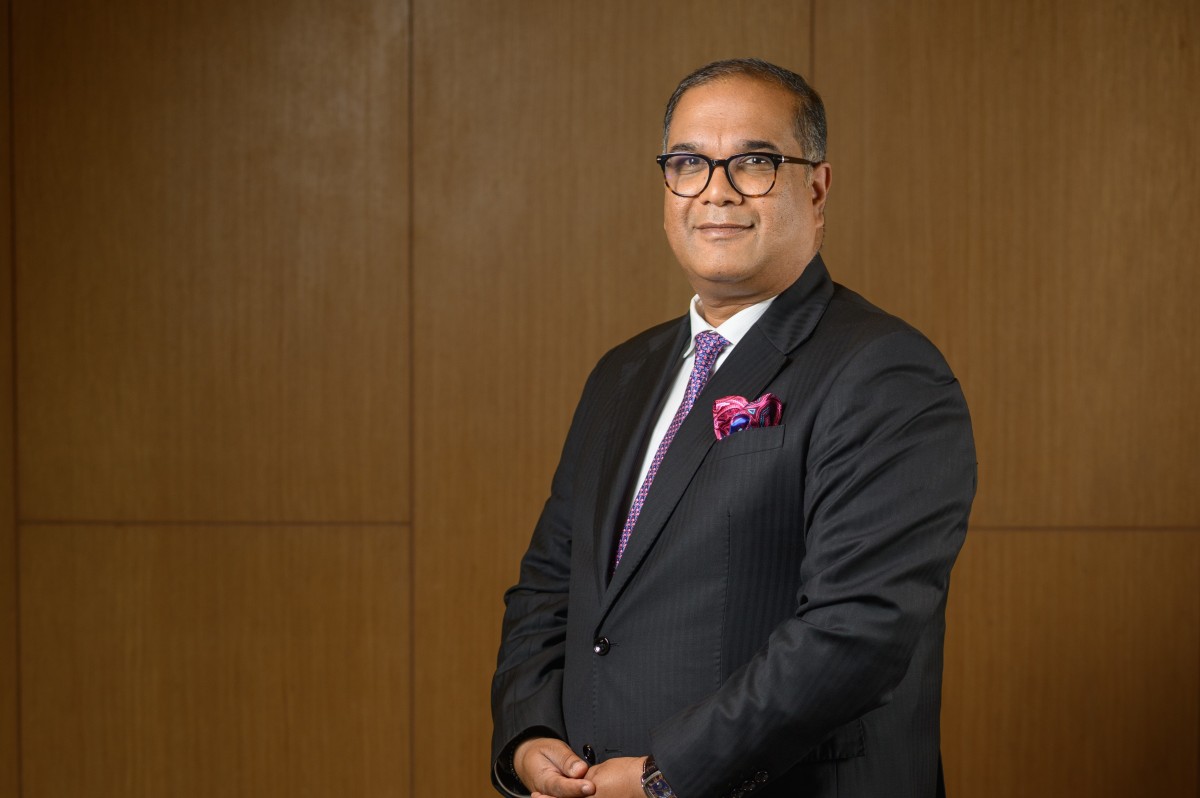
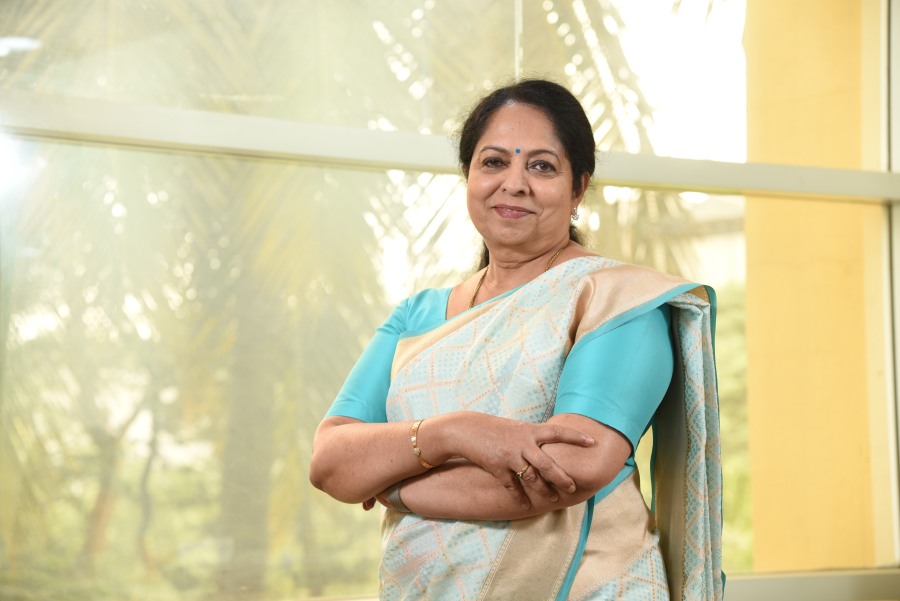
.jpg)
